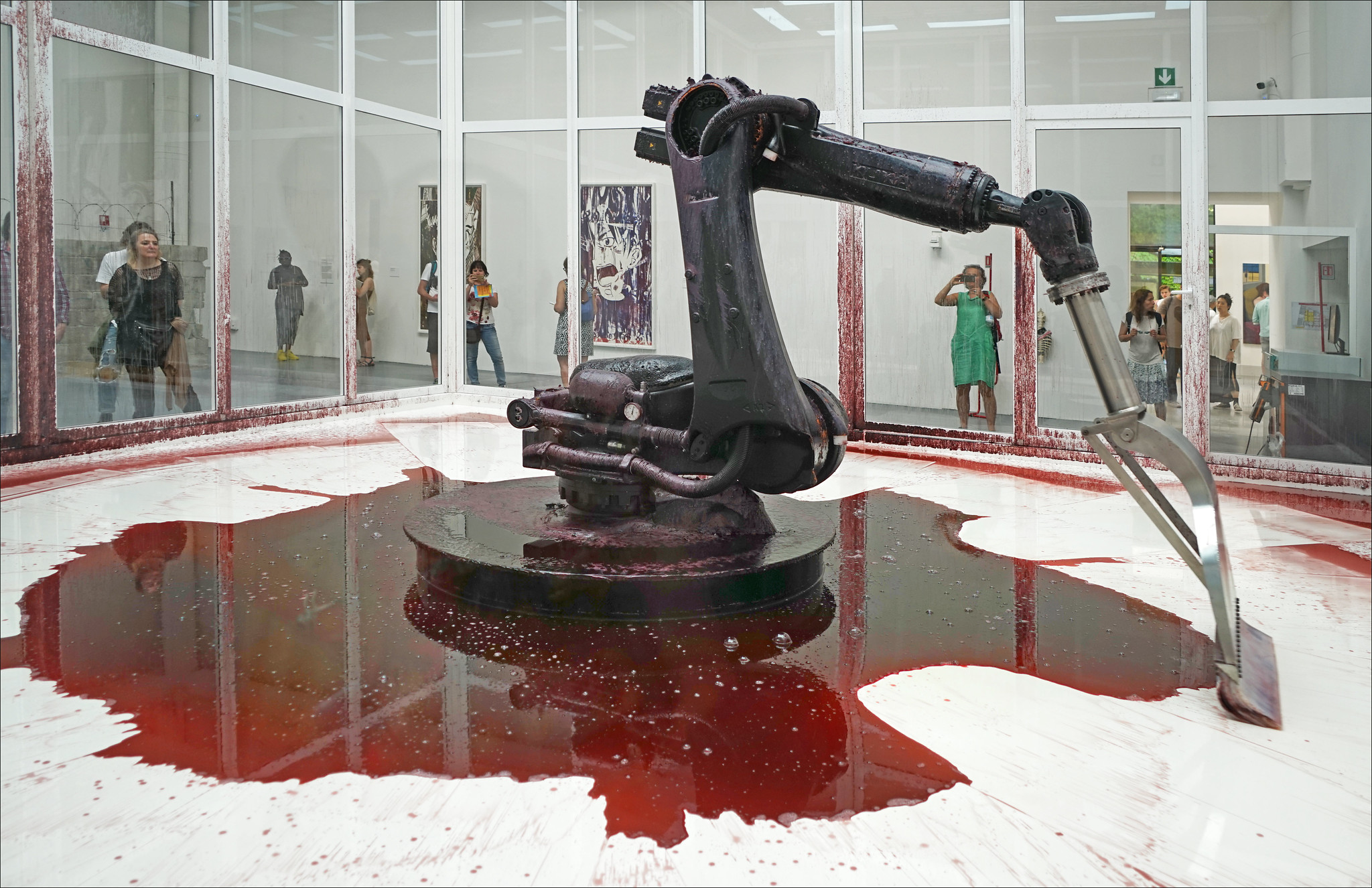The robotic installation art piece, ‘Can’t Help Myself’ (2016), has recently been rediscovered and gone viral on TikTok for moving viewers to tears over the decaying object. The intense emotional response to the dwindling lifespan of the machine is raising an important question about mechanical sentience and how robotic works, including artificial intelligence, can further complicate the impact of an artist’s intention on viewer interpretation.
Originally commissioned for the Guggenheim in 2016, artists Sun Yuan and Peng Yu were interested in the artistry behind the machinery. They constructed a large mechanical arm enclosed in a glass box that works to sweep up a viscous red liquid that inevitably spreads back out around the arm. In the original interview for the Guggenheim’s installation, the artists discussed how the piece addresses “the violence that results from surveilling and guarding border zones,” as well as the absurdity behind the arm’s rapid and continuous movement.[1] Viewers immediately responded to the piece by recognising its humanistic frantic movements to attempt to mop up the liquid in vain.
Can’t Help Myself was shown again at the Venice Biennale in 2019 where the anthropomorphic robot was clearly beginning to decay. The once pristine glass cube became covered in red, the machine was rusting, and the arm moved at a much slower rate. The name, Can’t Help Myself, is now even more fitting as the robot seems to wish to stop at its old age, but is not able to.
The discomfort of voyeuristically watching this robot struggle through a glass cage contributes to a newfound understanding of machine sentience. Even though the robot bears no human resemblance, viewers have assigned it consciousness and autonomy in a way that we often reserve for humanoid AI. Perhaps it is the response to seeing the toll of continuous labour appear on the machine. The decay of the object and its slowed yet continuous movements evoke a similar sadness to that of watching an elderly person struggle with daily tasks. Although the robot is not facing human death, we nonetheless are reminded of our own mortality. Of course, viewers are interpreting this in other ways, like the responsibility of cleaning your messes, or commentary on the exploitation of labour.
Whatever it may be, people see the sadness in the inanimate and have moved away from the artists’ original commentary on border violence. The anthropomorphising of the object and witnessing its decay has allowed the robot to take on a life of its own. Without artists reminding us of the object’s intended meaning, viewers created a new interpretation of the piece that allows the robot to speak for itself amidst its desperate and never-ending mopping.
Finally, as the machine has become unable to function, conservation questions are raised. Would restoring the object return the piece to its original intention, or is it best to continue exhibiting the lifeless robot in its cage? It seems there is no right answer. Like all art, it remains open to interpretation.
Writer: Devon Rosenberger
[1] Weng, Xiaoyu. “Can’t Help Myself.” Guggenheim Online Collection.
